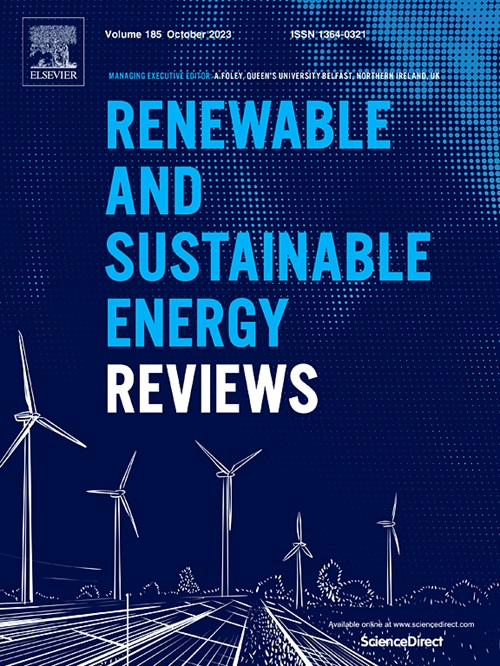Integrated energy system modeling perspectives for future decarbonization pathways based on sector coupling, life-cycle emissions and vehicle-to-grid integration
IF 16.3
1区 工程技术
Q1 ENERGY & FUELS
引用次数: 0
Abstract
The impending environmental crisis has propelled the global energy sector into radical transformation. Variable renewable energy necessitates unprecedented flexibility, transcending energy needs. Decarbonization is critical to achieving sustainable development goals on clean energy and climate action, creating a healthier planet for all. This critical review of current energy system modeling advocates integrated-whole-energy-system models as vital tools for generating diverse energy and policy-related insights. Sector-coupling is investigated, exploring the complex interplay between power, gas, transport, and heating. Nine challenges are delineated: Uncertainty, Renewable integration, Transparency and open-access, High-resolution modeling, Sector-coupling, Flexibility, Technological representation, Life-cycle emissions, and Social and human factors, while offering strategies for their resolution. This review envisions a future powered by renewables, achieving 50 % emissions and 30 % water usage reductions within a decade. The life cycle assessment integration can result in up to 80 % reductions in emissions; however, the cost may increase up to 40–60 %. Emerging technologies like green hydrogen and vehicle-to-grid (V2G) are vital drivers. Green hydrogen offers flexible storage and distribution while V2G transforms electric vehicles into prosumers, enabling grid flexibility and demand management, with studies demonstrating 20–50 % cost reductions and 65 % peak load reduction. A case study for the future decarbonization of the Indian power sector is presented in 19 scenarios based on recent studies, demonstrating the dominant role of solar and wind energy with around 55 % and 22 % share in 2050. This review pinpoints crucial research gaps, identifies successful strategies, and proposes new avenues to guide the energy sector toward a sustainable, low-carbon future.

求助全文
约1分钟内获得全文
求助全文
来源期刊

Renewable and Sustainable Energy Reviews
工程技术-能源与燃料
CiteScore
31.20
自引率
5.70%
发文量
1055
审稿时长
62 days
期刊介绍:
The mission of Renewable and Sustainable Energy Reviews is to disseminate the most compelling and pertinent critical insights in renewable and sustainable energy, fostering collaboration among the research community, private sector, and policy and decision makers. The journal aims to exchange challenges, solutions, innovative concepts, and technologies, contributing to sustainable development, the transition to a low-carbon future, and the attainment of emissions targets outlined by the United Nations Framework Convention on Climate Change.
Renewable and Sustainable Energy Reviews publishes a diverse range of content, including review papers, original research, case studies, and analyses of new technologies, all featuring a substantial review component such as critique, comparison, or analysis. Introducing a distinctive paper type, Expert Insights, the journal presents commissioned mini-reviews authored by field leaders, addressing topics of significant interest. Case studies undergo consideration only if they showcase the work's applicability to other regions or contribute valuable insights to the broader field of renewable and sustainable energy. Notably, a bibliographic or literature review lacking critical analysis is deemed unsuitable for publication.
 求助内容:
求助内容: 应助结果提醒方式:
应助结果提醒方式:


